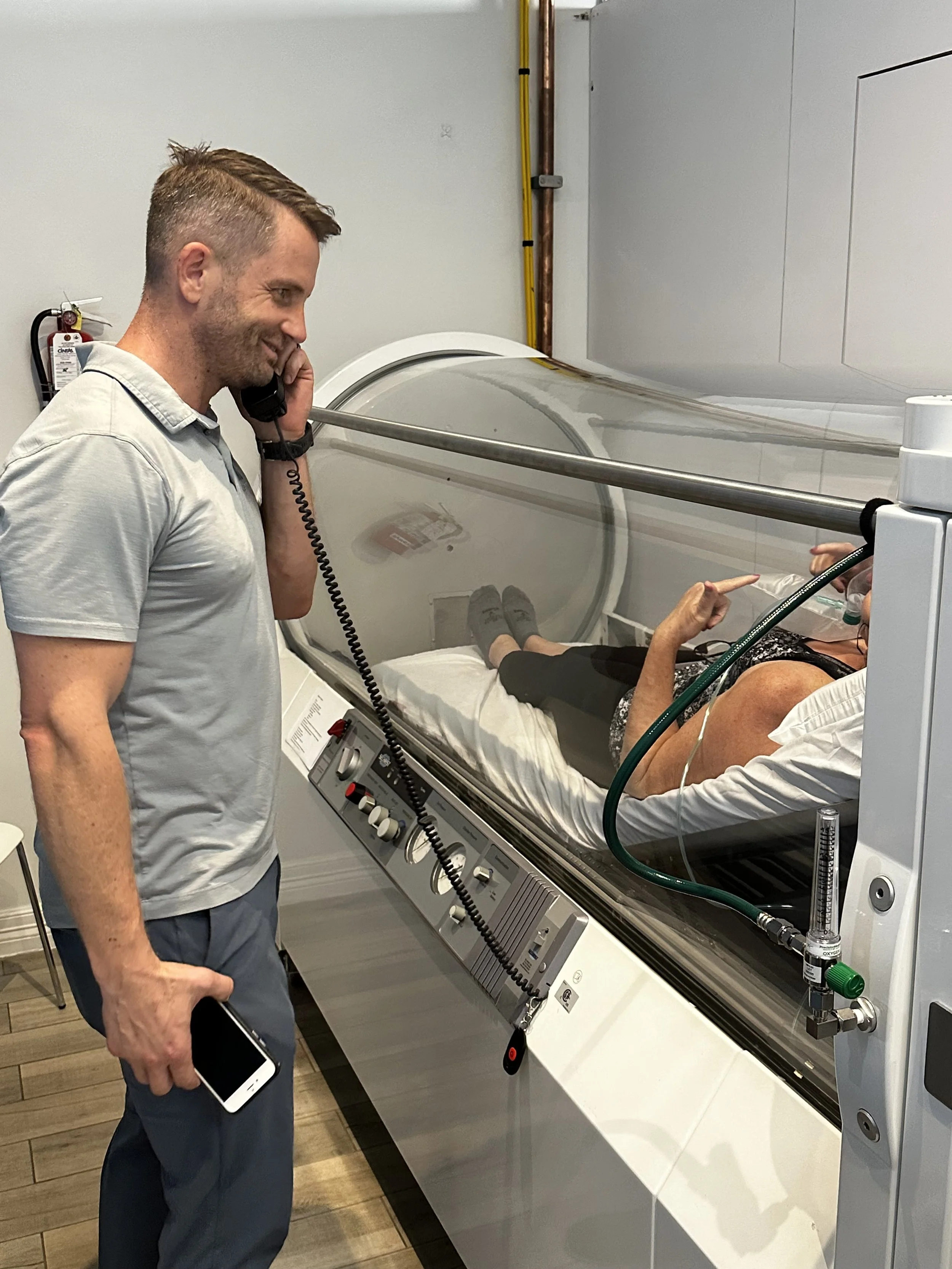Hyperbaric Therapy: Transforming Surgery Recovery
Hyperbaric Therapy: Transforming Surgery Recovery
Undergoing surgery is a pivotal moment in many people's lives. It brings a combination of hope for relief and an undercurrent of anxiety about the post-operative journey. While the surgical procedure itself is crucial, the recovery process that follows is equally significant. Emerging strongly in this post-surgical landscape is the role of Hyperbaric Oxygen Therapy (HBOT) — a modality showing immense promise in enhancing recovery.
UNPACKING THE “WHAT” BEHIND Hyperbaric Oxygen Therapy (HBOT)
HBOT is more than just a medical term; it's a revolutionary approach to healing. In this treatment, patients are placed in a chamber, allowing them to breathe 100% oxygen under elevated atmospheric pressure. Far from being a page out of a science fiction novel, HBOT is deeply rooted in biological principles and the human body's profound capacity for self-repair.
Why is HBOT a Key Player in Post-Surgical Recovery?
Surgical recovery transcends the superficial realm of stitches and scars. At its core, it involves cellular repair, tissue regeneration, and in many cases, an emotional journey back to normalcy. Central to these multifaceted recovery processes is the life-giving molecule: oxygen.
Gordillo and Sen's pivotal 2003 study sheds light on the indispensable role of oxygen in wound healing. This research underscores oxygen's integral part in cellular growth and repair. To put it simply: by boosting oxygen supply through HBOT, we're turbocharging our body's innate healing arsenal.
When surgeries involve grafts or flaps, the recovery game's ante is upped. It's here that Cianci and Slade's 2006 research enters the spotlight, highlighting HBOT's pivotal role in addressing and potentially rectifying delayed surgical flap complications. It's not just about healing enhancement; it's a beacon of hope for better surgical outcomes and reducing the need for further interventions.
The Statistic Spotlight: How HBOT is Making a Difference
Diving into recent research, the table above narrates a compelling story. These statistics don't just spotlight HBOT's potential; they amplify the call for its inclusion in post-surgical recovery regimens.
Informed Decisions: HBOT and Beyond
For anyone mapping out their post-surgery recovery terrain, HBOT emerges as a robust contender. It paints a picture not just of accelerated recovery, but of a more holistic, comprehensive healing experience. In a world continuously evolving in medical marvels, HBOT echoes the future of surgical recovery.
Always remember: while evidence-backed techniques like HBOT are transforming the medical landscape, consulting healthcare professionals and crafting a personalized recovery journey remains paramount.
In Conclusion
Surgery is undoubtedly a monumental event. But the real litmus test of its success lies in the recovery aftermath. With groundbreaking techniques like HBOT, we're not merely passive bystanders hoping for recovery; we're actively catalyzing it. For anyone at the crossroads of surgery, Hyperbaric Oxygen Therapy might just be the keystone of your recovery arch.
At both Houston-area Huemn locations, we provide hard shell, medical-grade Hyperbaric Oxygen Therapy chambers. To learn more about this service, click here.
References:
Gordillo, GM., & Sen, CK. (2003). Revisiting the essential role of oxygen in wound healing. The American Journal of Surgery.
Cianci, P., & Slade, JB. (2006). Delayed treatment with hyperbaric oxygen and the salvage of a compromised free flap. Undersea & Hyperbaric Medicine.


